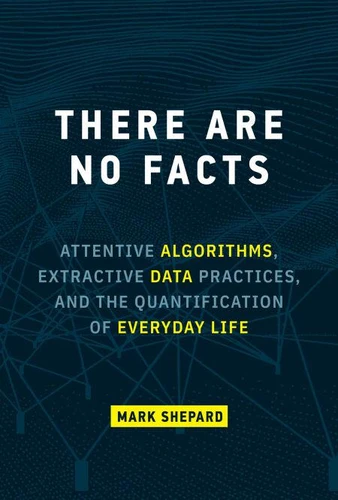There Are No Facts. Attentive Algorithms, Extractive Data Practices, and the Quantification of Everyday Life
Par :Formats :
Disponible dans votre compte client Decitre ou Furet du Nord dès validation de votre commande. Le format ePub protégé est :
- Compatible avec une lecture sur My Vivlio (smartphone, tablette, ordinateur)
- Compatible avec une lecture sur liseuses Vivlio
- Pour les liseuses autres que Vivlio, vous devez utiliser le logiciel Adobe Digital Edition. Non compatible avec la lecture sur les liseuses Kindle, Remarkable et Sony
- Non compatible avec un achat hors France métropolitaine
 , qui est-ce ?
, qui est-ce ?Notre partenaire de plateforme de lecture numérique où vous retrouverez l'ensemble de vos ebooks gratuitement
Pour en savoir plus sur nos ebooks, consultez notre aide en ligne ici
- Nombre de pages280
- FormatePub
- ISBN978-0-262-37187-2
- EAN9780262371872
- Date de parution08/11/2022
- Protection num.Adobe DRM
- Taille82 Mo
- Infos supplémentairesepub
- ÉditeurThe MIT Press
Résumé
The entanglements of people and data, code and space, knowledge and power: how data and algorithms shape the world-and shape us within that world. With the emergence of a post-truth world, we have witnessed the dissolution of the common ground on which truth claims were negotiated, individual agency enacted, and public spheres shaped. What happens when, as Nietzsche claimed, there are no facts, but only interpretations? In this book, Mark Shepard examines the entanglements of people and data, code and space, knowledge and power that have produced an uncommon ground-a disaggregated public sphere where the extraction of behavioral data and their subsequent processing and sale have led to the emergence of micropublics of ever-finer granularity. Shepard explores how these new post-truth territories are propagated through machine learning systems and social networks, which shape the public and private spaces of everyday life.
He traces the balkanization and proliferation of online news and the targeted distribution of carefully crafted information through social media. He examines post-truth practices, showing how truth claims are embedded in techniques by which the world is observed, recorded, documented, and measured. Finally, he shows how these practices play out, at scales from the translocality of the home to the planetary reach of the COVID-19 pandemic-with stops along the way at an urban minimarket, an upscale neighborhood for the one percent, a Toronto waterfront district, and a national election.
He traces the balkanization and proliferation of online news and the targeted distribution of carefully crafted information through social media. He examines post-truth practices, showing how truth claims are embedded in techniques by which the world is observed, recorded, documented, and measured. Finally, he shows how these practices play out, at scales from the translocality of the home to the planetary reach of the COVID-19 pandemic-with stops along the way at an urban minimarket, an upscale neighborhood for the one percent, a Toronto waterfront district, and a national election.
The entanglements of people and data, code and space, knowledge and power: how data and algorithms shape the world-and shape us within that world. With the emergence of a post-truth world, we have witnessed the dissolution of the common ground on which truth claims were negotiated, individual agency enacted, and public spheres shaped. What happens when, as Nietzsche claimed, there are no facts, but only interpretations? In this book, Mark Shepard examines the entanglements of people and data, code and space, knowledge and power that have produced an uncommon ground-a disaggregated public sphere where the extraction of behavioral data and their subsequent processing and sale have led to the emergence of micropublics of ever-finer granularity. Shepard explores how these new post-truth territories are propagated through machine learning systems and social networks, which shape the public and private spaces of everyday life.
He traces the balkanization and proliferation of online news and the targeted distribution of carefully crafted information through social media. He examines post-truth practices, showing how truth claims are embedded in techniques by which the world is observed, recorded, documented, and measured. Finally, he shows how these practices play out, at scales from the translocality of the home to the planetary reach of the COVID-19 pandemic-with stops along the way at an urban minimarket, an upscale neighborhood for the one percent, a Toronto waterfront district, and a national election.
He traces the balkanization and proliferation of online news and the targeted distribution of carefully crafted information through social media. He examines post-truth practices, showing how truth claims are embedded in techniques by which the world is observed, recorded, documented, and measured. Finally, he shows how these practices play out, at scales from the translocality of the home to the planetary reach of the COVID-19 pandemic-with stops along the way at an urban minimarket, an upscale neighborhood for the one percent, a Toronto waterfront district, and a national election.




